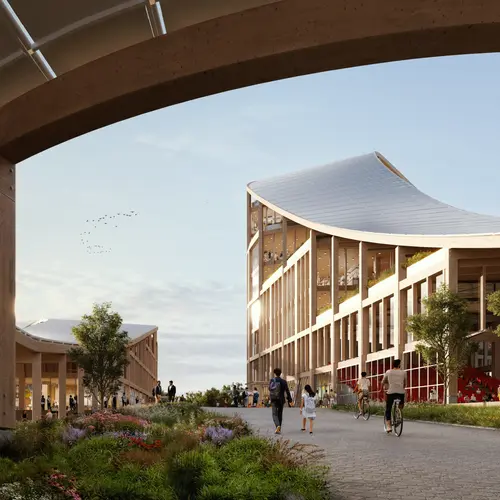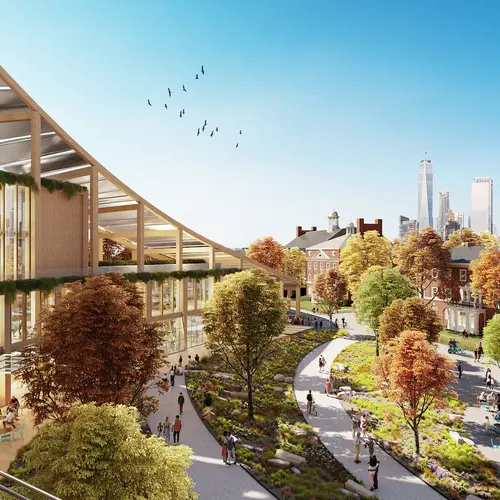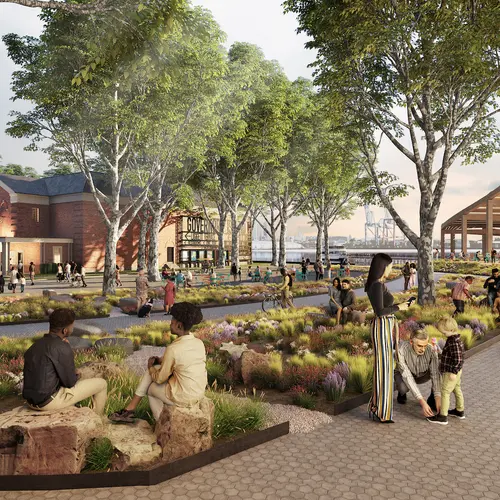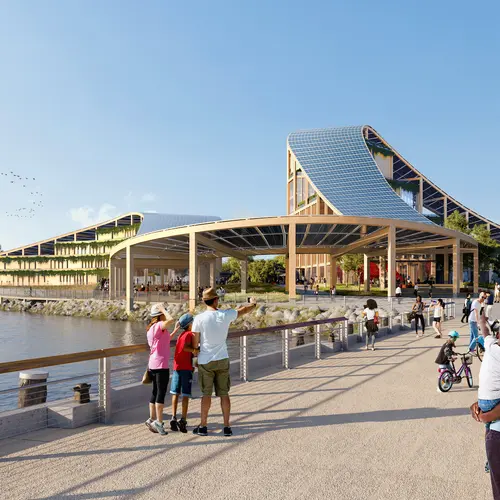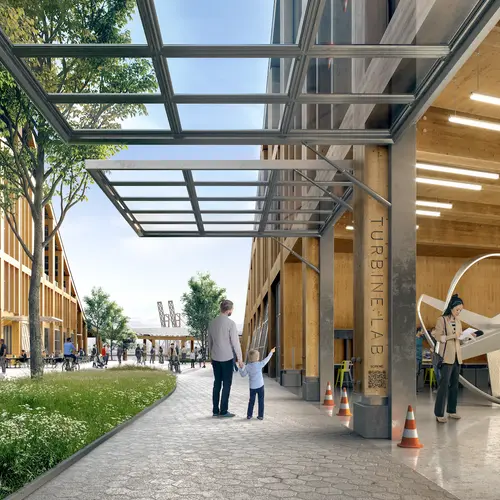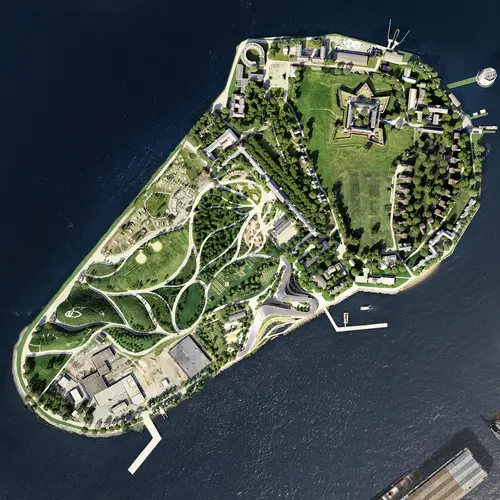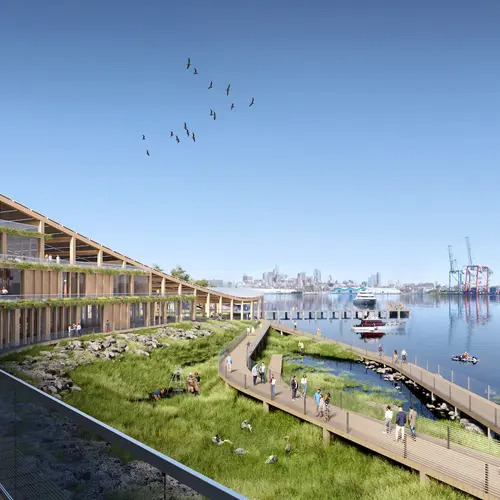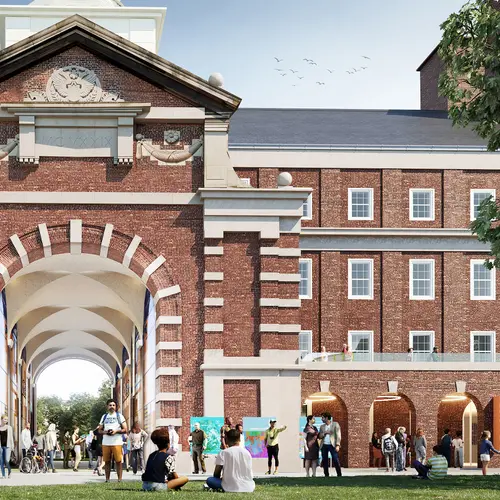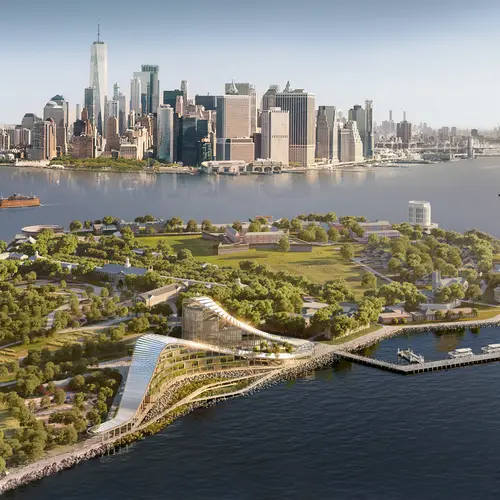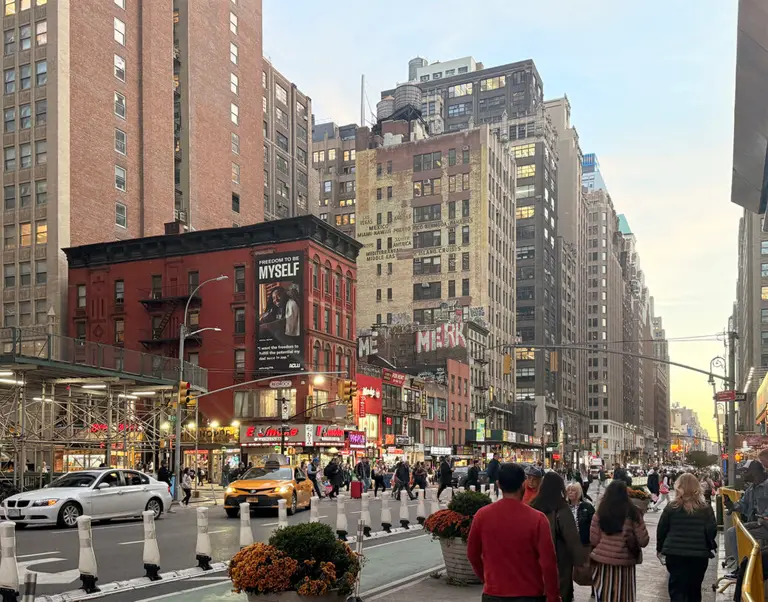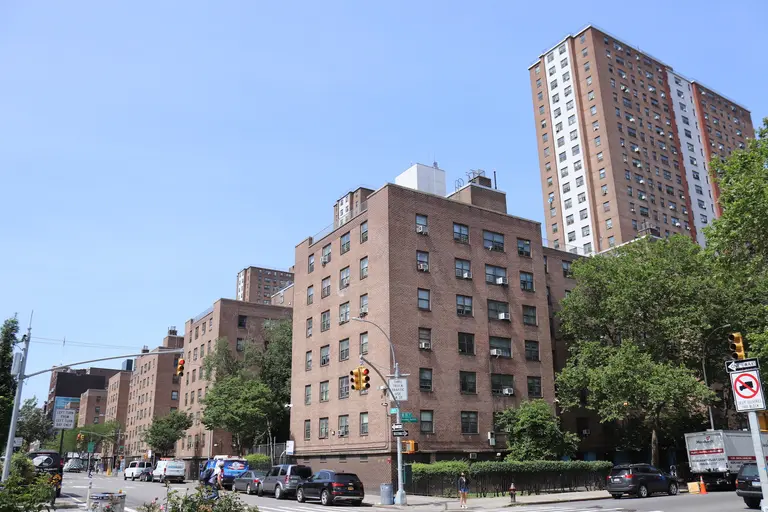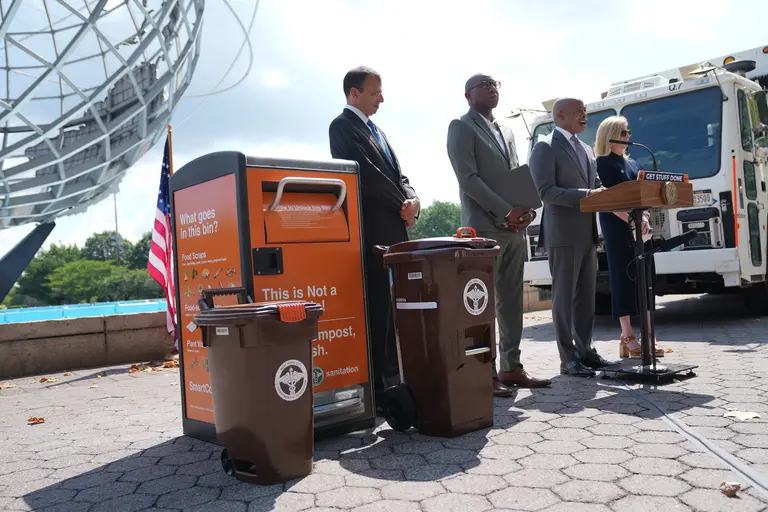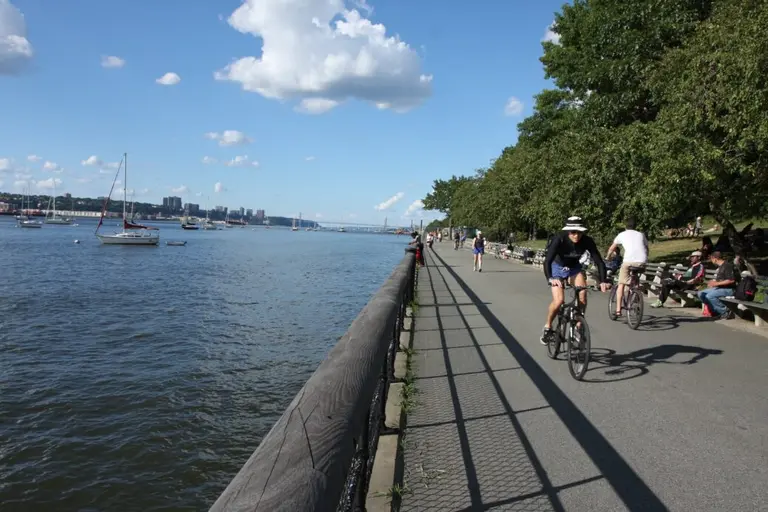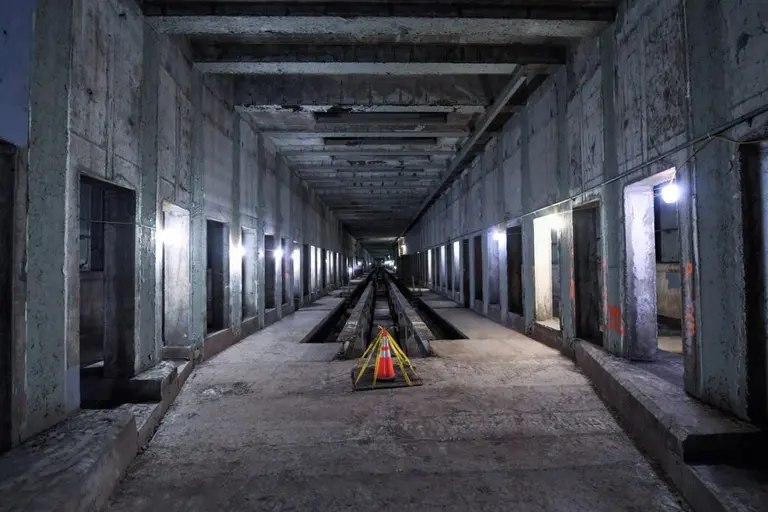$700M climate research campus designed by SOM headed to Governors Island
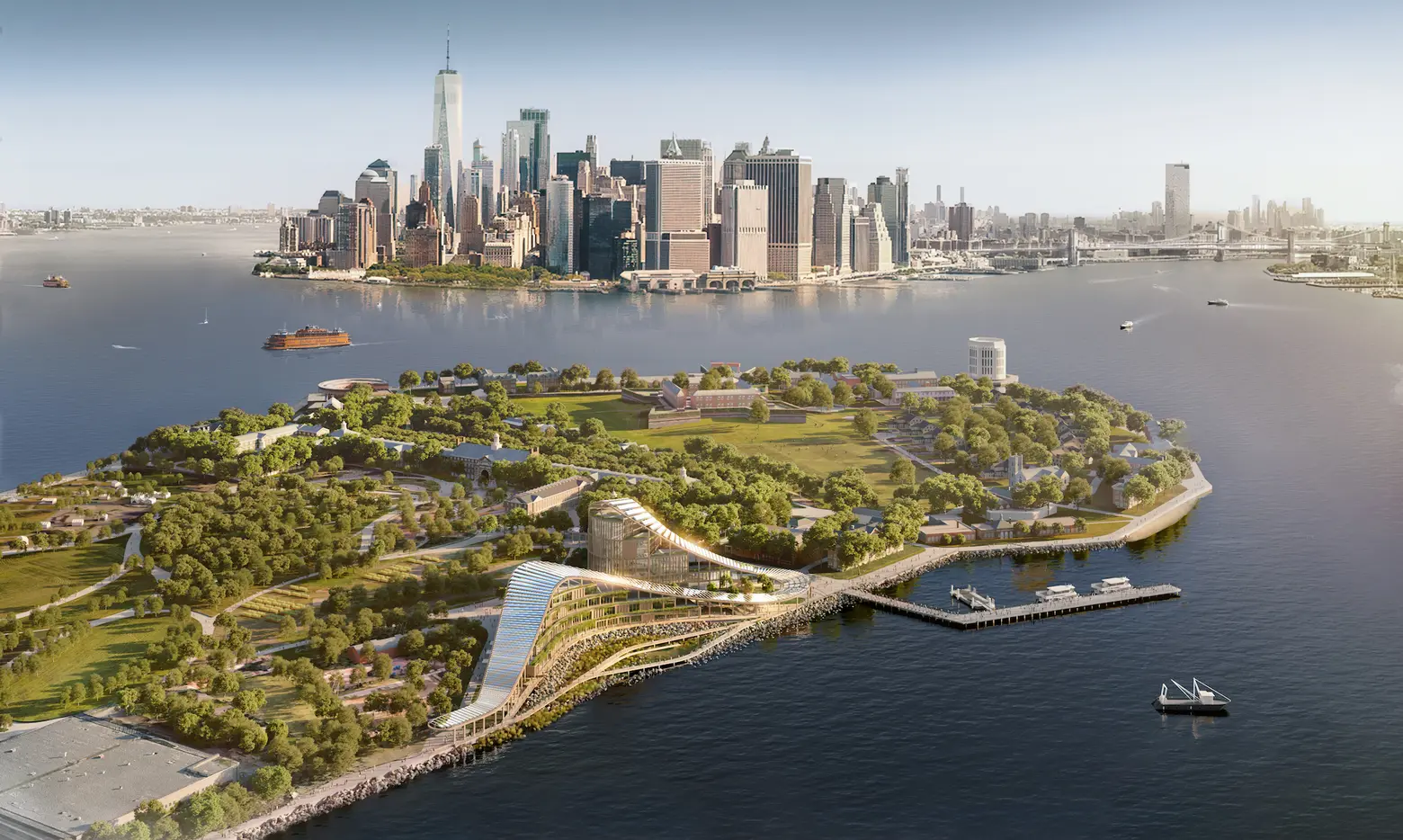
Aerial view of The Exchange, showing the iconic forms designed to evoke the dramatic landscapes and hills of Governors Island. © SOM | Miysis
New York City has revealed its vision for a first-in-the-nation climate research hub on Governors Island. Led by Stony Brook University, the New York Climate Exchange will be a nonprofit organization dedicated to climate research and solutions and serve as a center for climate education and green job training. Designed by Skidmore, Owings & Merrill (SOM), the 400,000-square-foot campus includes classrooms, laboratories, new open space, student and faculty housing, university hotel rooms, and more. Construction on the $700 million project is expected to begin in 2025, with the first phase slated for completion in 2028.
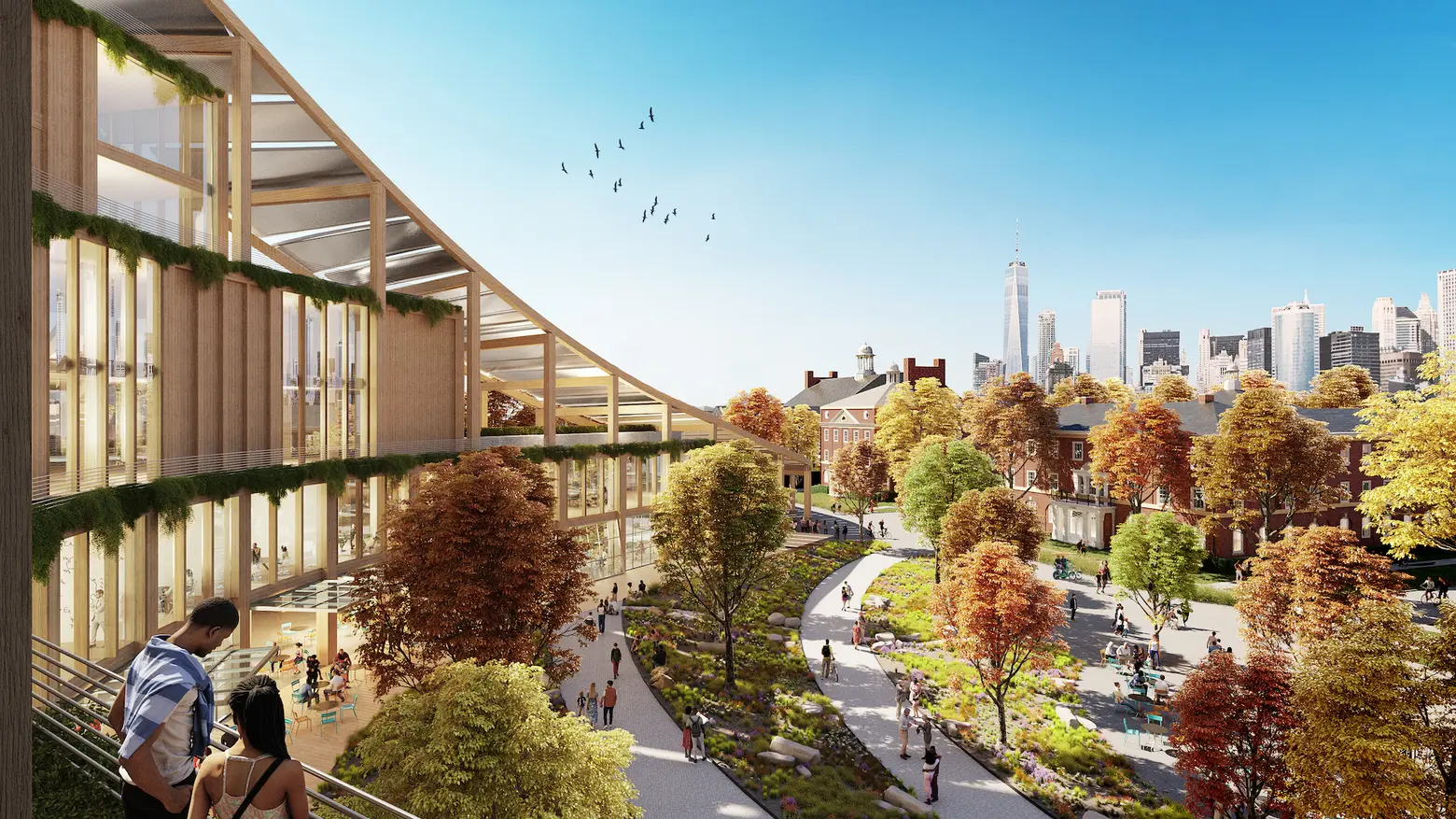 View from the academic center across new open spaces toward the student housing in the restored historic Liggett Hall. © SOM | Miysis
View from the academic center across new open spaces toward the student housing in the restored historic Liggett Hall. © SOM | Miysis
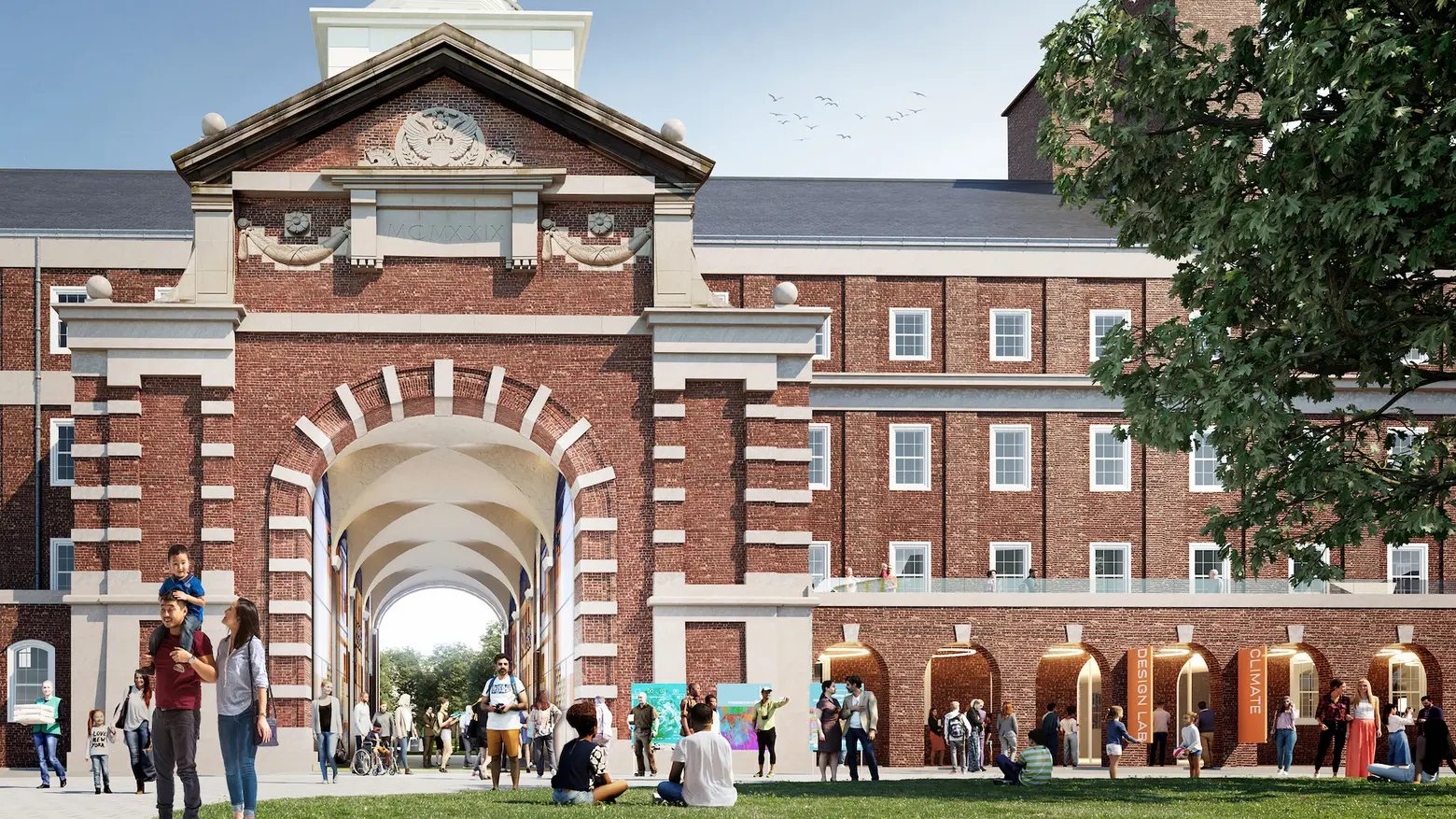 Public design lab to engage the community along the restored central arch of historic Liggett Hall. © SOM | Miysis
Public design lab to engage the community along the restored central arch of historic Liggett Hall. © SOM | Miysis
Mayor Eric Adams on Monday, joined by the president of the Trust for Governors Island, Clare Newman, announced the selection of Stony Brook’s proposal as the anchor institution of the Center for Climate Solutions initiative, following a two-year bidding process. The initiative is expected to create thousands of permanent jobs as well as roughly $1 billion in economic impact for the city, according to the mayor.
“Today, here in the heart of New York Harbor, we are taking a giant leap toward a cleaner, greener, more prosperous future for every New Yorker with the ‘New York Climate Exchange,’” Adams said.
“This first-of-its-kind project will make New York City a global leader in developing solutions for climate change while creating thousands of good-paying green jobs for New Yorkers and infusing $1 billion into our city’s economy. Where some people see challenges, New Yorkers see opportunities, and this team and this project are leading the charge.”
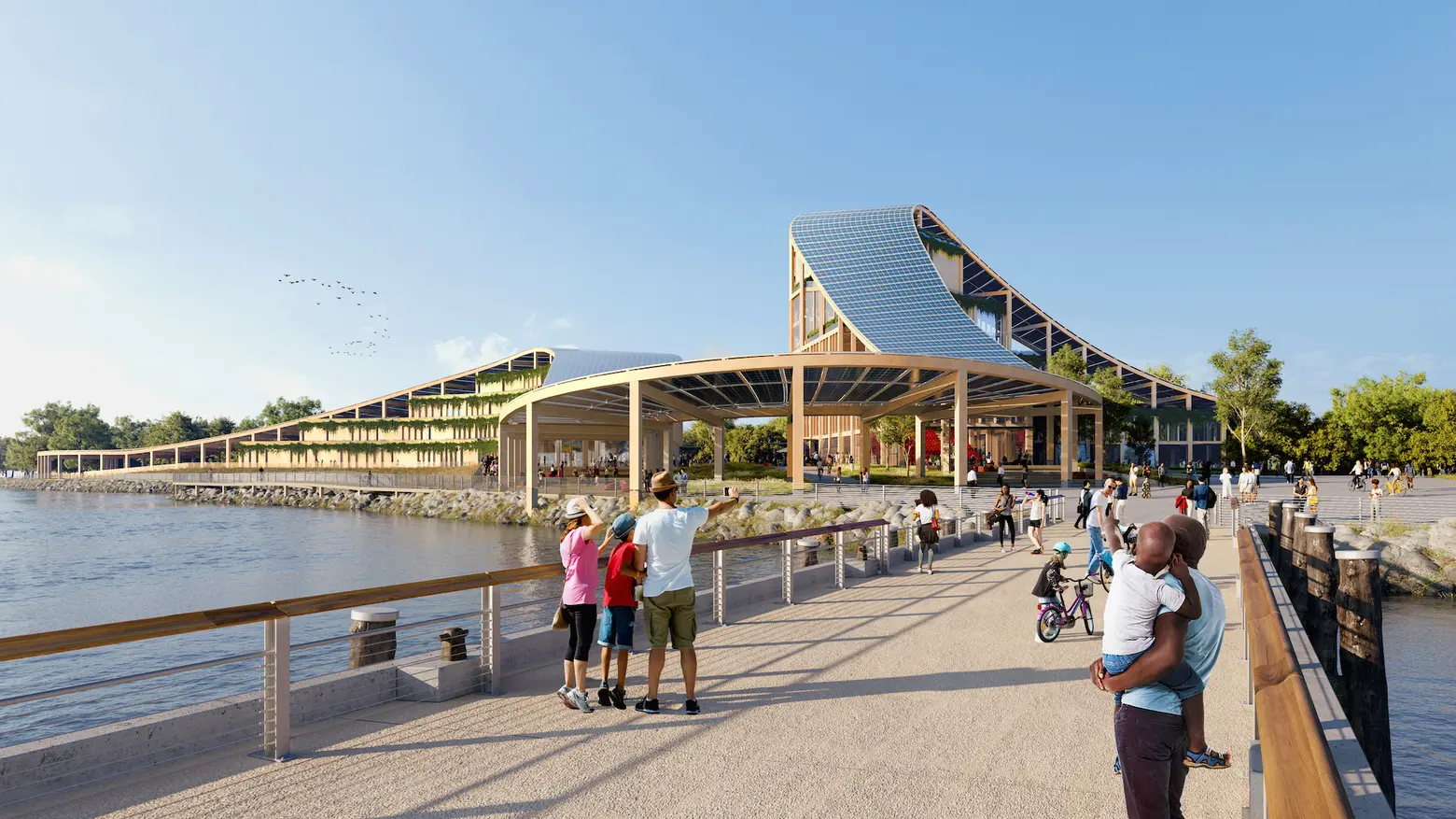
Renovated Yankee Pier leading toward a new public plaza and new mass timber academic and research buildings at the Exchange. © SOM | Brick Visual
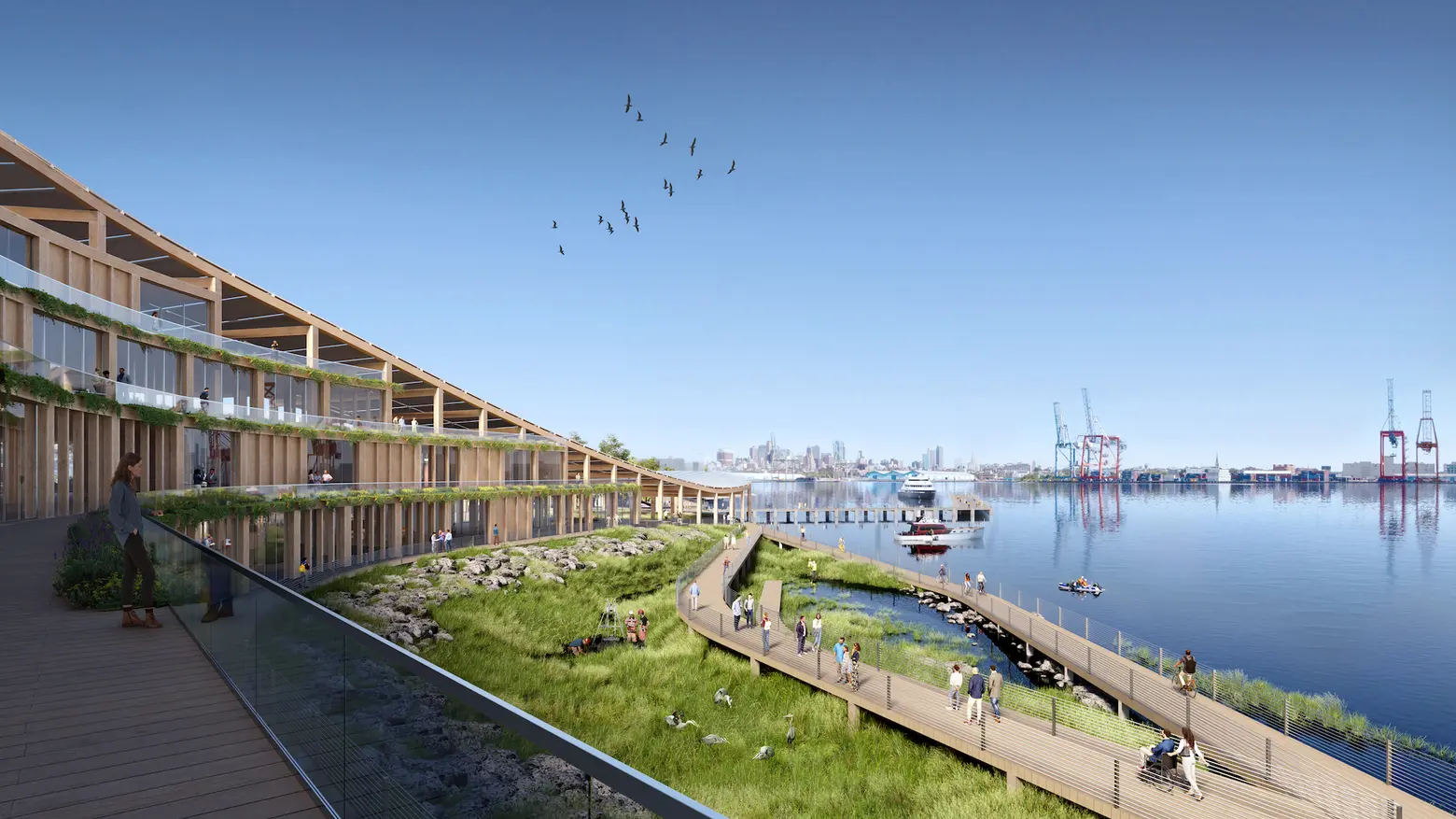
New public walkways along the water’s edge overlooking a research-focused tidal pool. © SOM | Brick Visual
The campus will also include two newly constructed classrooms and research buildings across three acres of the island’s eastern development zone. More than 170,000 square feet of space within historic buildings like Liggett Hall and the Fort Jay Theater will be restored.
As part of the project, the Exchange will create 4.5 acres of new open space as part of Phase 1 of its construction plan, adding to Governors Island’s existing 120 acres of public space. Additionally, the construction of the campus will be designed to better connect its preexisting 43-acre park.
Once the campus opens to the public, the Exchange is expected to serve roughly 600 postsecondary students, 4,500 K-12 students, 6,000 workforce trainees, and 250 faculty and researchers each year while supporting up to 30 businesses through its incubator program.
Research and education at the Exchange will be centered around the themes of environmental justice and inclusion, the impacts of the use of food, water, and energy on climate change, and sustainable and resilient cities.
The Exchange will host comprehensive workforce development and training programs that will provide New Yorkers with the skills and knowledge to make a career in the city’s growing climate sector. The center’s partners include the Georgia Institute of Technology, Pace University, Pratt Institute, University of Washington, Boston Consulting Group, Good Old Lower East Side, and IBM.
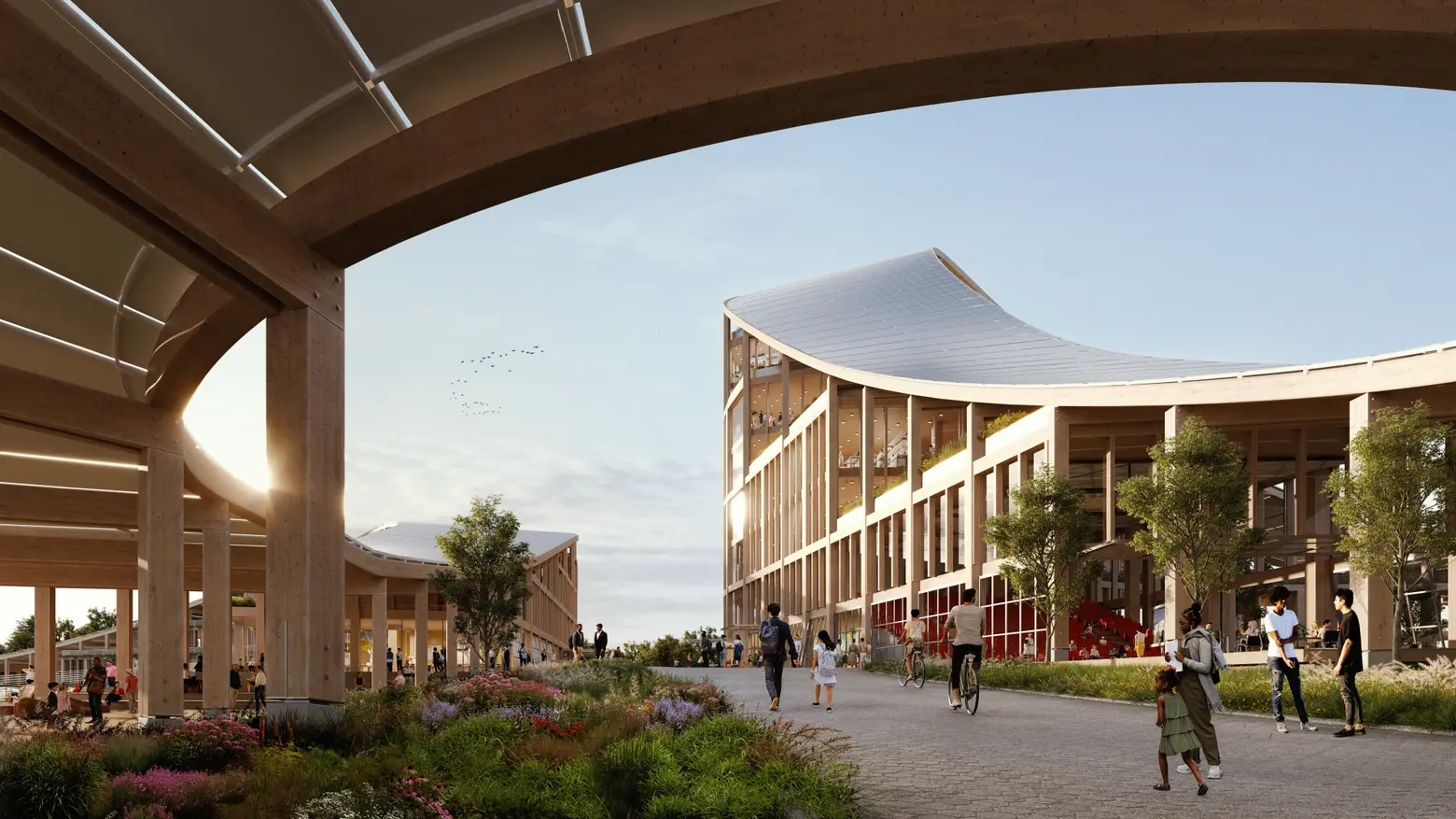
Public walkway and landscape between the new mass timber academic and research buildings. © SOM | Brick Visual
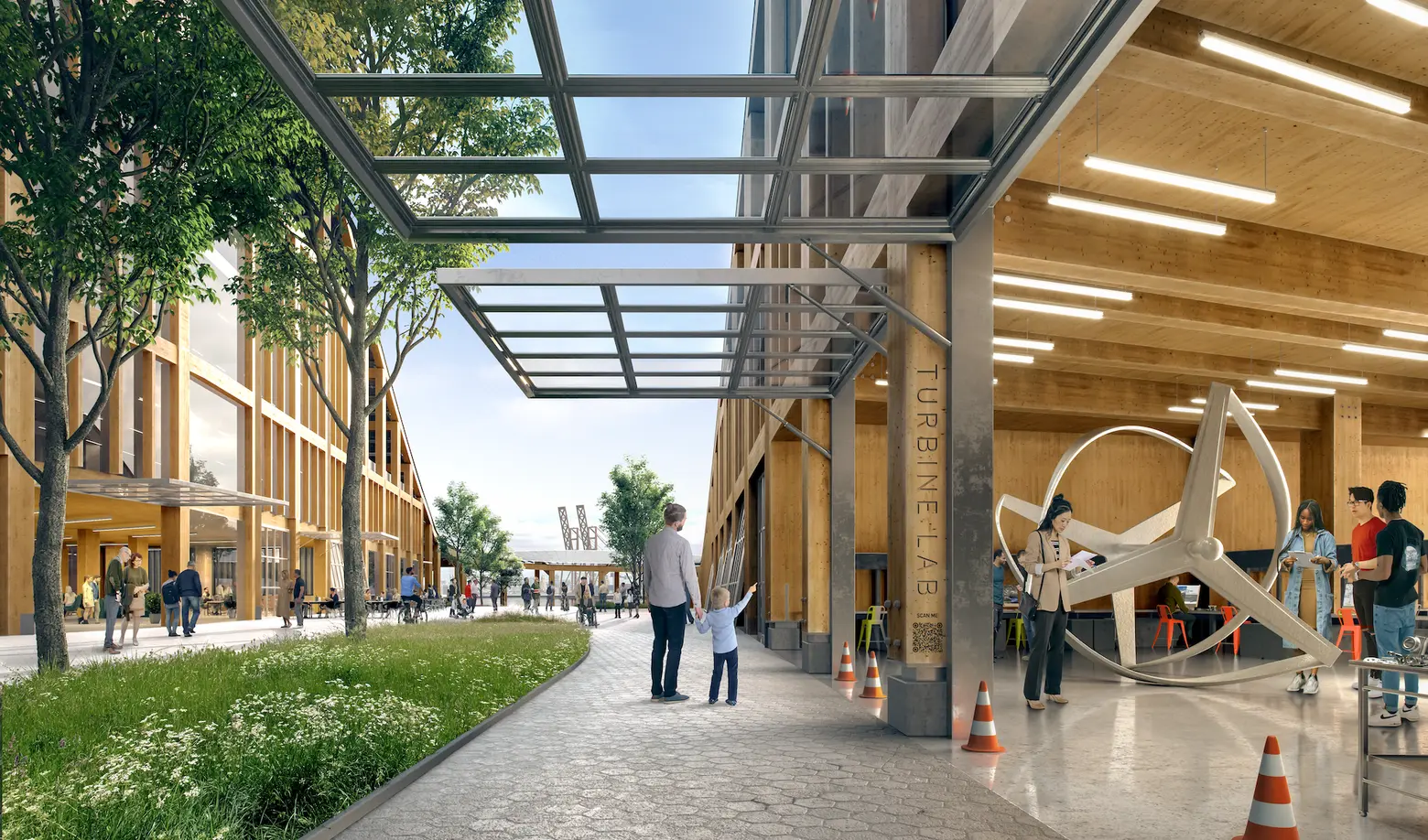 Open labs and research spaces will be located along the public walkway between the new academic and research buildings. © SOM | Brick Visual
Open labs and research spaces will be located along the public walkway between the new academic and research buildings. © SOM | Brick Visual
The total costs of construction are estimated to be roughly $700 million in total, with $150 million in previously allocated city capital funding, $100 million from the Simons Foundation, and $50 million from Bloomberg Philanthropies. The remaining funding for development and operational costs will be raised by the Exchange.
Maurie McInnis, president of Stony Brook University, said the new institution will make New York the world leader on climate change.
“Up until now, the development of climate solutions has been siloed, with world leaders separate from expert scientists separate from the on-the-ground green workforce,” McInnis said. “As an international leader on climate and as the leading public research institution in New York, Stony Brook University will bring stakeholders together from the academic, government, and business communities to make the Climate Exchange the center of research, innovation, education, and collaboration to address this global crisis.”
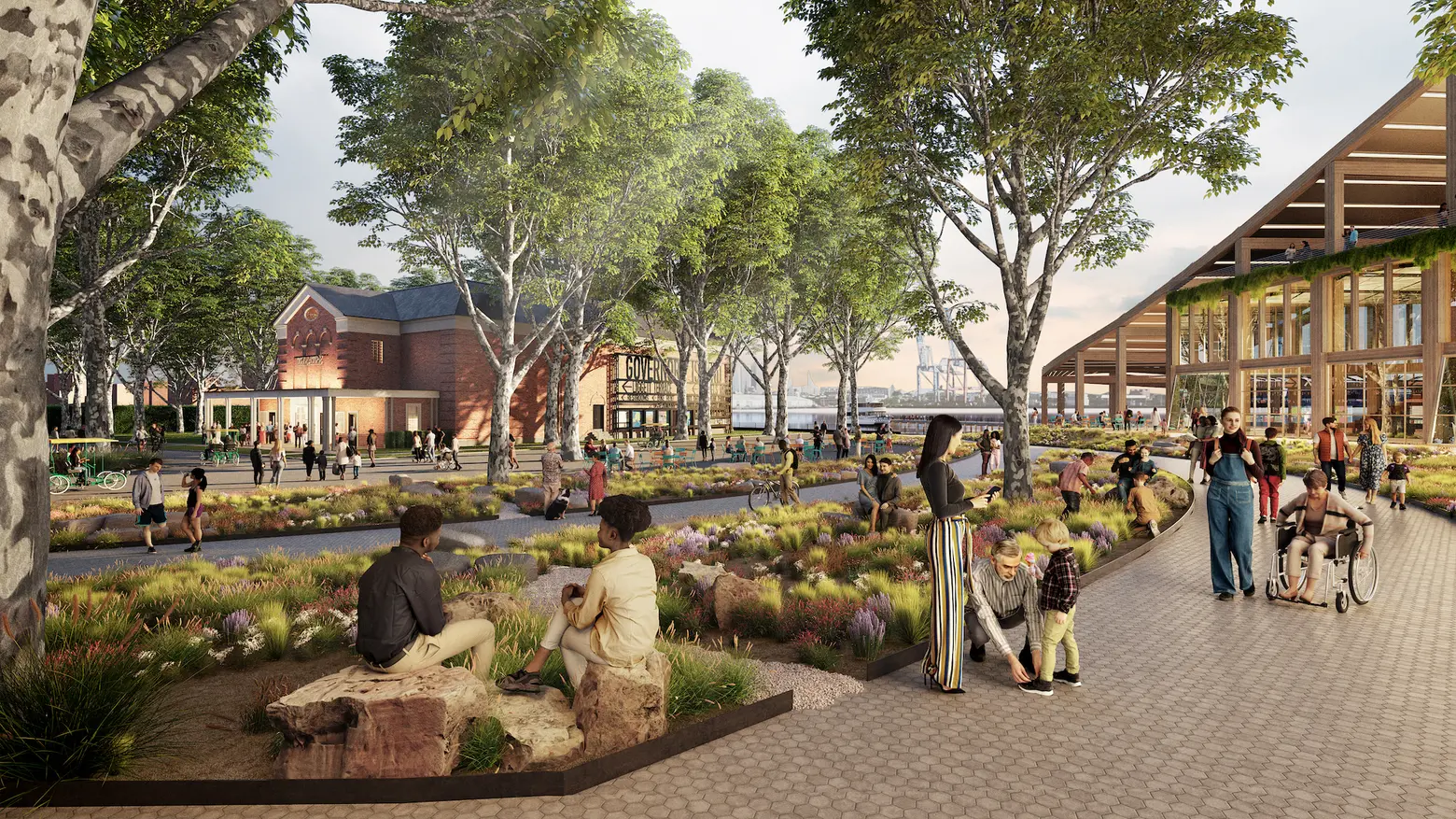 View across a new public space along Division Road, looking toward the renovated historic theater. © SOM | Miysis
View across a new public space along Division Road, looking toward the renovated historic theater. © SOM | Miysis
Conceived by SOM in collaboration with MNLA, Buro Happold, and Langan Engineering, the design of the Exchange features “energy positive” elements, including mass timber construction and solar power generation. According to the architects, the buildings on the campus will be among the first in the country to achieve True Zero Waste certification, meet 100 percent of its non-potable water demand with rainwater and treated wastewater, and run totally on electricity generated on-site.
The architects created a design that complements the natural landscape of Governors Island and the urban landscape of New York City, weaving a “living laboratory” into the beloved parkland.
“Our design for this new campus embodies the stewardship necessary to solve the climate crisis by weaving sinuous mass timber pavilions through the rolling landscape of the park and reusing the historic building fabric of Governors Island,” SOM Design Partner Colin Koop said.
“Together, these spaces will cultivate advances in climate research and pilot new technologies that can be deployed across the city, and eventually the world.”
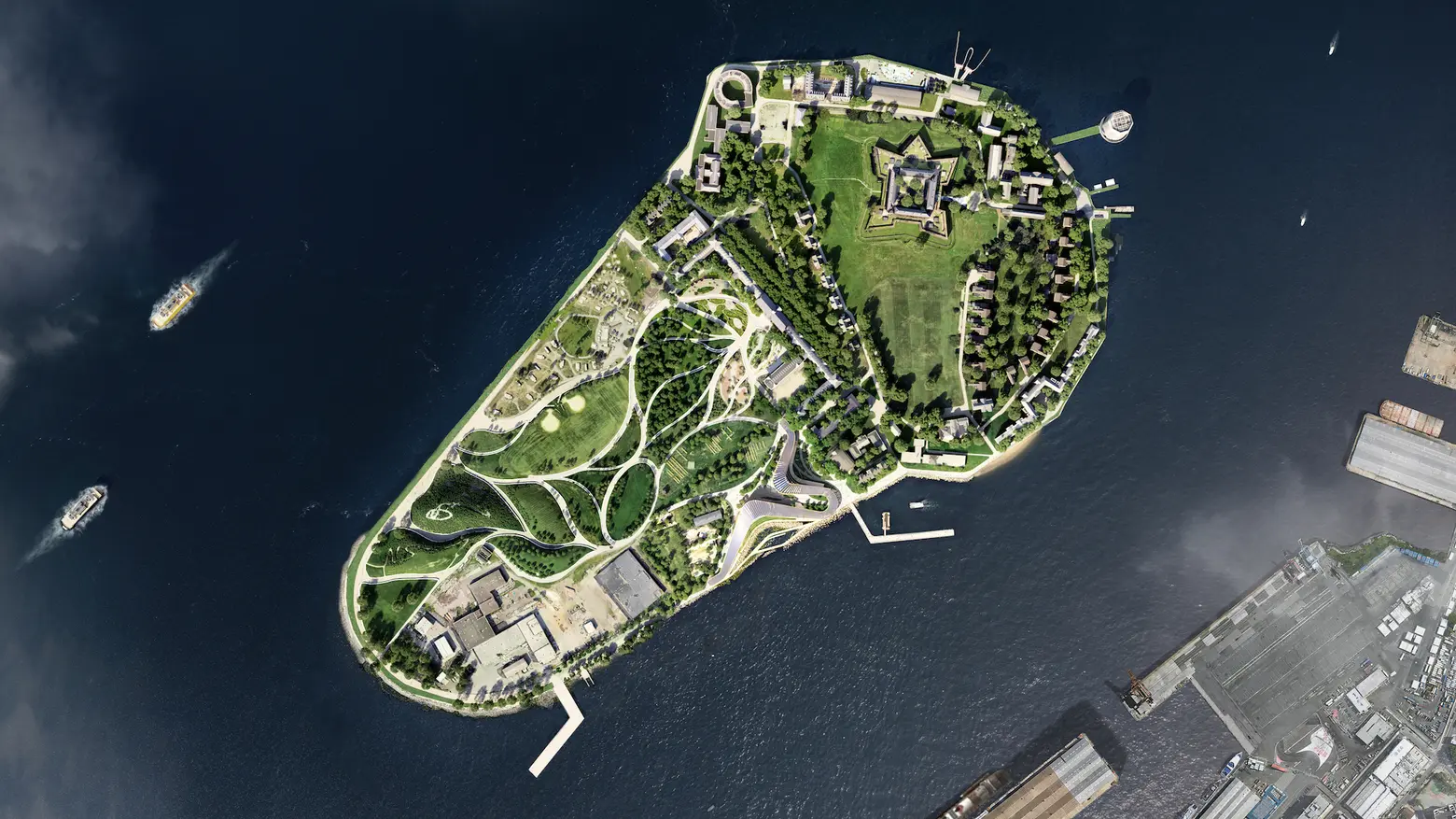
Aerial view showing the curvilinear forms of the new buildings and public spaces along the eastern edge of Governors Island, echoing the forms of the recently developed public park space. © SOM | Miysis
First used by the Lenape Tribe of Manhattan for camping and fishing, Governors Island was later settled by the Dutch in 1624 and used for several centuries by the military. In 2003, the federal government sold the remaining 150 acres of Governors Island to the people of New York, with a deed ensuring much of it be used for public benefit. The island officially opened to the public in 2005 and a master plan in 2010 resulted in a park, ball fields, cultural institutions, food vendors, and public programs.
In October 2019, the city began seeking proposals for a “major center for climate adaptation research, commercialization, conversation, and policymaking” to be built on Governors Island, as 6sqft previously reported.
The Trust revealed its initial proposal for the climate research center in September 2020. The monumental project required a rezoning of Governors Island’s southern end, approved by the City Council in 2021, which allows for 4 million square feet of development.
The Exchange will serve as the anchor institution for the Center for Climate Solutions on Governors Island, part of Adams’ ”Rebuild, Renew, Reinvent: A Blueprint for NYC’s Economic Recovery” plan.
RELATED:
